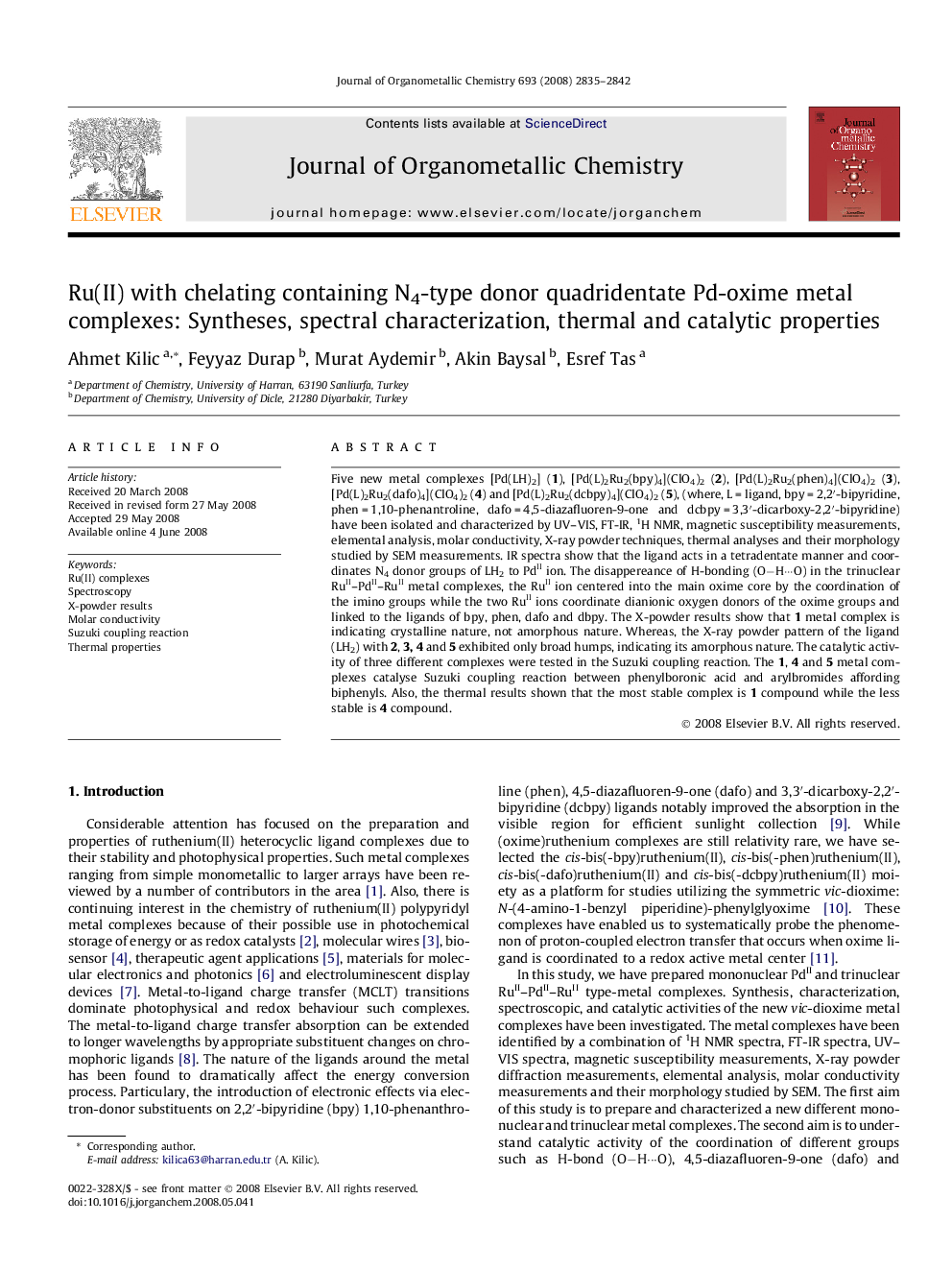| کد مقاله | کد نشریه | سال انتشار | مقاله انگلیسی | نسخه تمام متن |
|---|---|---|---|---|
| 1327890 | 977515 | 2008 | 8 صفحه PDF | دانلود رایگان |

Five new metal complexes [Pd(LH)2] (1), [Pd(L)2Ru2(bpy)4](ClO4)2 (2), [Pd(L)2Ru2(phen)4](ClO4)2 (3), [Pd(L)2Ru2(dafo)4](ClO4)2 (4) and [Pd(L)2Ru2(dcbpy)4](ClO4)2 (5), (where, L = ligand, bpy = 2,2′-bipyridine, phen = 1,10-phenantroline, dafo = 4,5-diazafluoren-9-one and dcbpy = 3,3′-dicarboxy-2,2′-bipyridine) have been isolated and characterized by UV–VIS, FT-IR, 1H NMR, magnetic susceptibility measurements, elemental analysis, molar conductivity, X-ray powder techniques, thermal analyses and their morphology studied by SEM measurements. IR spectra show that the ligand acts in a tetradentate manner and coordinates N4 donor groups of LH2 to PdII ion. The disappereance of H-bonding (O−H···O) in the trinuclear RuII–PdII–RuII metal complexes, the RuII ion centered into the main oxime core by the coordination of the imino groups while the two RuII ions coordinate dianionic oxygen donors of the oxime groups and linked to the ligands of bpy, phen, dafo and dbpy. The X-powder results show that 1 metal complex is indicating crystalline nature, not amorphous nature. Whereas, the X-ray powder pattern of the ligand (LH2) with 2, 3,4 and 5 exhibited only broad humps, indicating its amorphous nature. The catalytic activity of three different complexes were tested in the Suzuki coupling reaction. The 1, 4 and 5 metal complexes catalyse Suzuki coupling reaction between phenylboronic acid and arylbromides affording biphenyls. Also, the thermal results shown that the most stable complex is 1 compound while the less stable is 4 compound.
Five new metal complexes 1, 2, 3, 4 and 5 have been isolated and characterized by UV–VIS, FT-IR, 1H NMR, magnetic susceptibility measurements, elemental analysis, molar conductivity, X-ray powder techniques, thermal analyses and their morphology studied by SEM measurements. The catalytic results shown that the 1 complex is more efficient than the other complexes and has the more selectivity for this coupling reaction. Also, the thermal results shown that the most stable complex is 1 compound while the less stable is compound 4.Figure optionsDownload as PowerPoint slide
Journal: Journal of Organometallic Chemistry - Volume 693, Issue 17, 15 August 2008, Pages 2835–2842